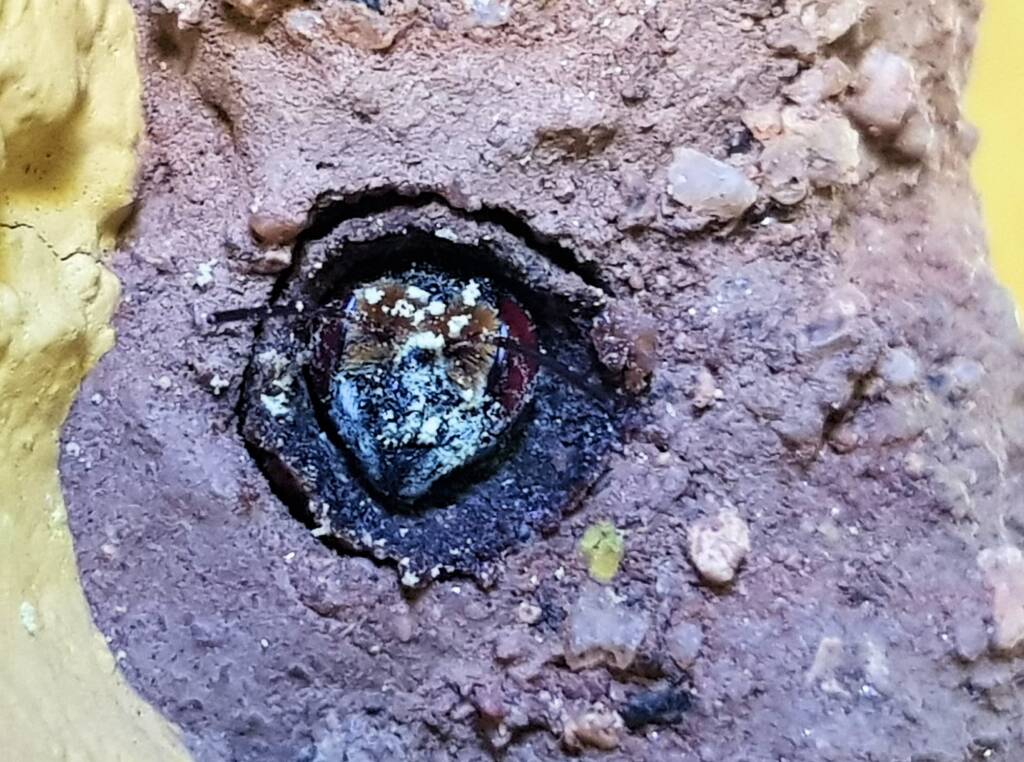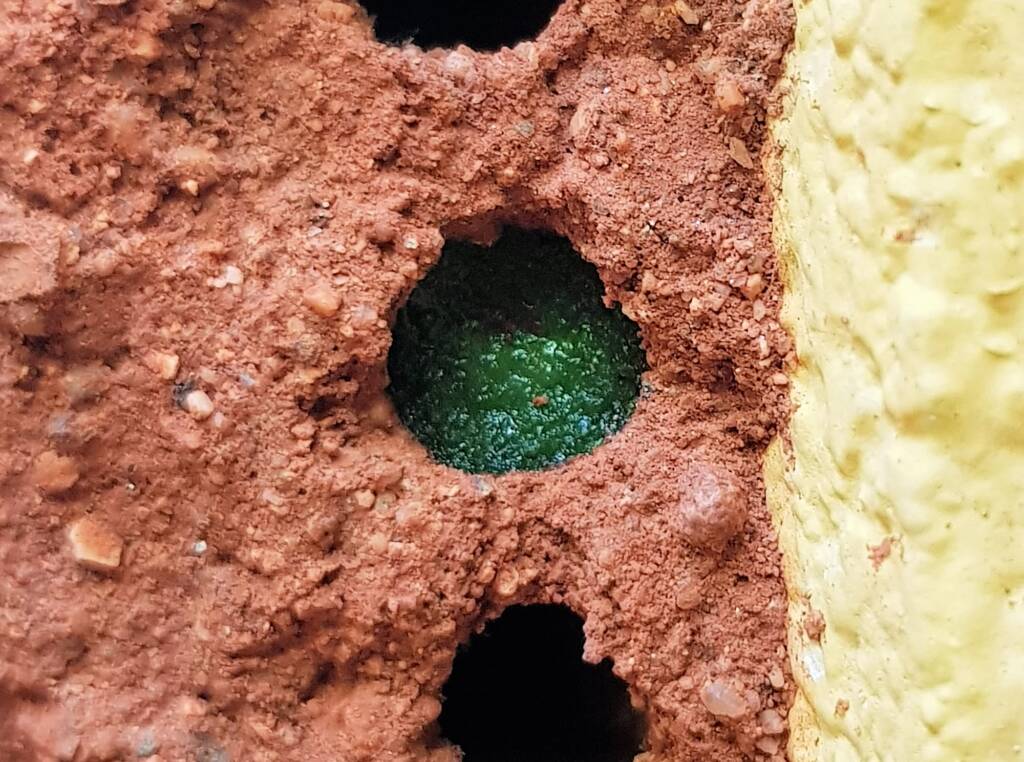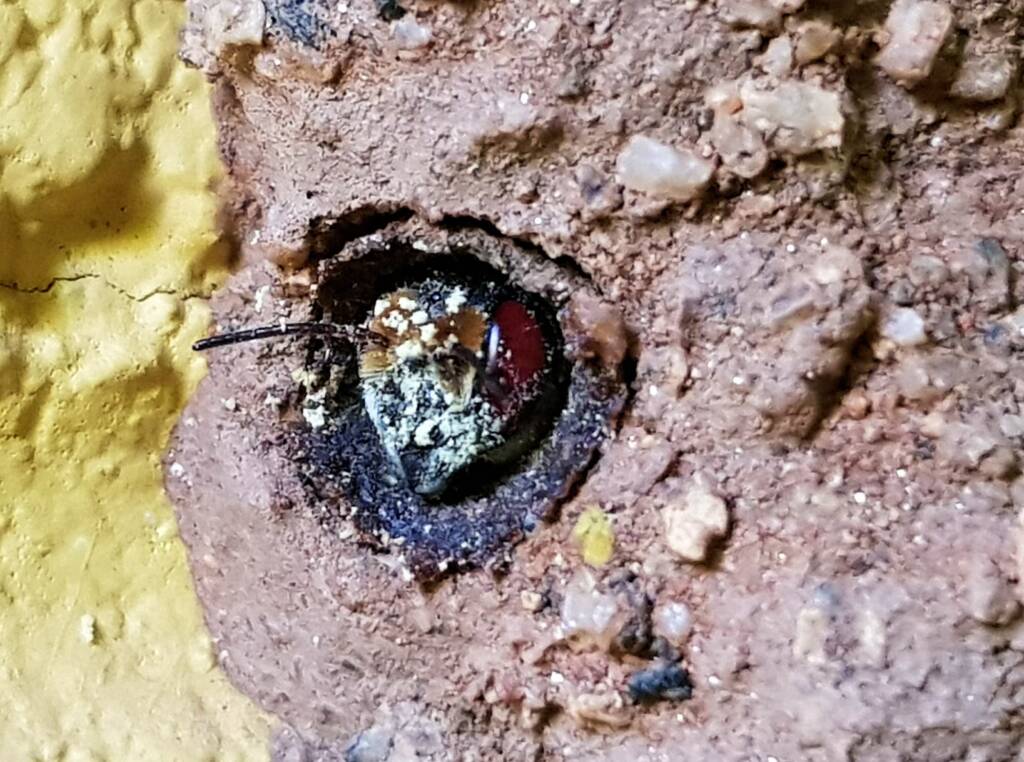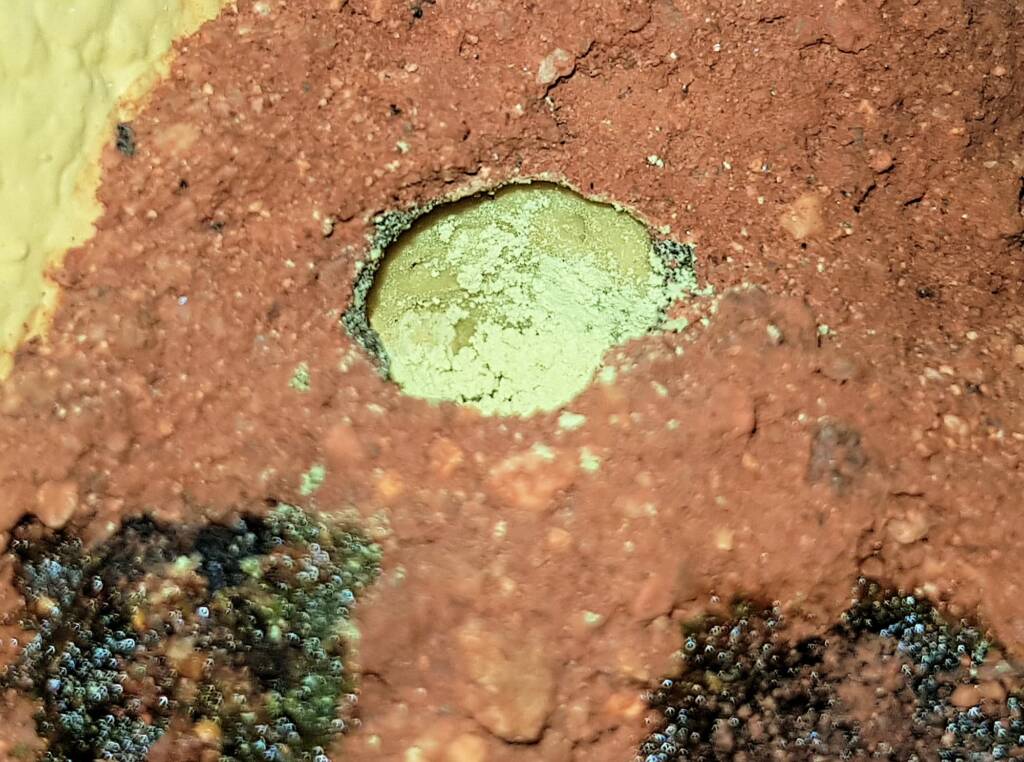Megachile aurifronscapping the nest generalist feeder nest cell activity nesting new life opportunity knocks makita pollen private moments red eyes five eyes resin squatting bee video bee video sequel
Following is an image of a newly emerging Megachile aurifrons bee (head covered in traces of pollen) having broken through the resin, that was used to seal the egg/larva in the nesting cavity.
The parent female Golden-browed Resin Bee would have prepared the nesting cavity and filled it with pollen. She would then most likely have laid a single egg (due to the size of the nest) before sealing the nesting cavity with resin.
After a certain length of time the egg hatches and the larva will eat the stockpile of stored food (pollen). During the development period the larva will undergo a number of larval instar stages (typically four) of pupating, before metamorphosing and breaking through the resin seal to the exit, emerging as an adult bee.

The following image is of a freshly sealed Megachile aurifrons nest. The bright green colour of the seal indicates the recent sealing of the nest, as the resin cap will eventually darken or become a dull green (others may be brown to reddish depending on what is macerated with the leaf in creation of the resin).

Once the female Megachile aurifrons seals the nesting hole with resin, under ideal environmental conditions, it can take between 2 to 3 months for the new bee to emerge. In warmer temperatures the development time can be shorter, although in cooler periods it can be longer. If the eggs are laid late in the season the offspring will undergo diapause, where it will suspend their metabolism, until more favourable seasonal temperatures and conditions return.

The following example of how crammed with pollen the nest is before it is sealed over with resin by the Megachile aurifrons bee.

To read and learn more about this species and cycles of native bees, check out the Bees in the burb Facebook group and publications by Kit Prendergast.
- Scientific classification
- Kingdom: Animalia
- Phylum: Arthropoda
- Class: Insecta
- Order: Hymenoptera
- Family: Megachilidae
- Genus: Megachile
- Species: Megachile aurifrons
Footnote & References
- How to make a native bee hotel, Words and images by Kit Prendergast (BSc, PhD researcher at Curtin University), About The Garden Pty Ltd, https://www.aboutthegarden.com.au/how-to-make-a-native-bee-hotel/
- Bees in the burb, Kit Prendergast, https://www.facebook.com/groups/1041684025880609
Megachile aurifronscapping the nest generalist feeder nest cell activity nesting new life opportunity knocks makita pollen private moments red eyes five eyes resin squatting bee video bee video sequel
BeesBees Anatomy Bee Behaviour Blogging Bees… Bees – image index Amegilla Bee Apis mellifera Austroplebeia australis Austrothurgus Braunsapis sp Ceylalictus perditellus Colletidae Euryglossinae Exoneura Homalictus Hyleoides bivulnerata Lasioglossum Lasioglossum (Chilalictus) Lipotriches Megachile Meroglossa Stenotritidae Tetragonula Thyreus Xylocopa
